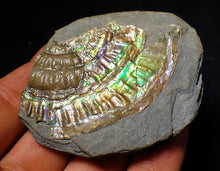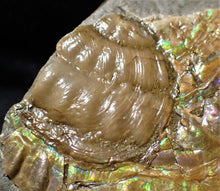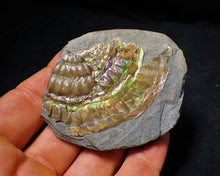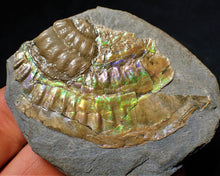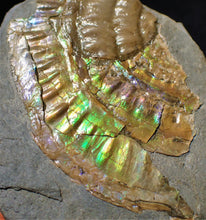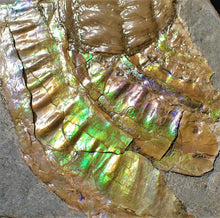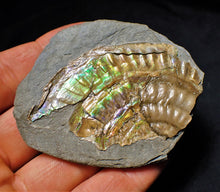
A stunning example of an iridescent ammonite fossil of the species Caloceras johnstoni from North Somerset, UK.
The matrix measures 70 mm (2.75 inches) wide and contains a partial ammonite. The shell sits in the original limestone matrix in which it was found and is well preserved and has been prepared out of the rock to reveal the detail. The shell displays some beautiful green-coloured iridescence with multiple hues that change as the viewing angle changes. Caloceras with green colours are very sought after. There is also a very unusual bivalve shell that encrusted onto the ammonite, possible after it died and lay on the seafloor. The detail in the bivalve is exceptional with pronounced growth lines and the shape of the bivalve mirroring the part of the ammonite shell it encrusted. The fossil has been coated in the soluble (reversible) lacquer for protection and to highlight the colours.
These fossils are highly sought after and very hard to find. They are preserved in the same way as the famous Canadian "Ammolite" ammonites that are turned into valuable gemstones. The fossil weighs 35 grams. These fossils make great unusual gifts and each one is totally unique.
Around 200 million years old (Hettangian, Early Jurassic), this fossil would make a wonderful addition to any collection.









